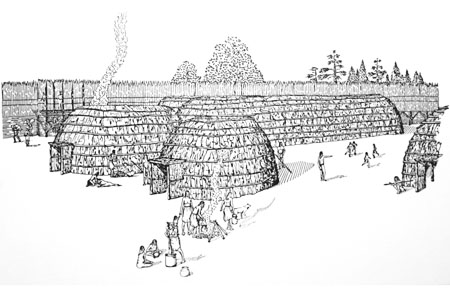Pre-contact Ontario
The glacial ice from the last great ice age is thought to have receded from Ontario approximately 11,000 years ago, after having covered the region for approximately one million years. As the ice disappeared, animals began to move northward, attracted by the vegetation that soon developed on the newly uncovered land; people, in search of game, soon followed.
The following eras are presented down this page in chronological order. If you do not wish to read about each one, please click on the period that interests you:
Paleo Indian Period (circa 7000 B.C.E.)
The first inhabitants of Ontario lived in small family-based groups, depending on plants and large game animals (moose, deer, caribou, elk) for their food. These nomadic peoples used stone, skin, antler bone, wood, and plant fibres to produce the tools and goods necessary for their survival.
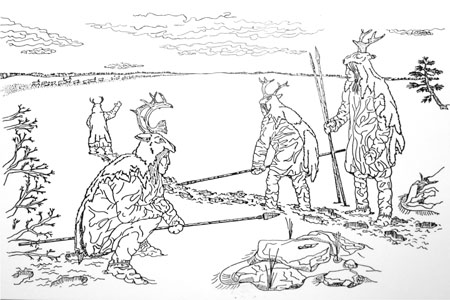
Early Archaic Period (circa 5000 B.C.E.)
Early Archaic peoples produced a greater variety of items than their predecessors. Of particular importance were the dugout canoes and stone tools made by grinding rather than by flaking. The water craft allowed the Early Archaic peoples to travel greater distances, facilitating the exchange of new ideas and goods.
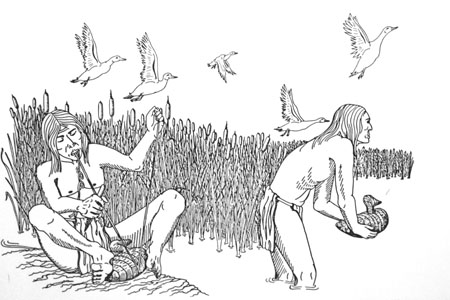
Middle Archaic Period (circa 3000 B.C.E.)
The peoples who inhabited Eastern Ontario during the Middle Archaic Period participated in a trade network that spanned the Great Lakes region. For example, copper obtained from the shores of Lake Superior was traded in Eastern Ontario, where it was made into awls, needles, knives, fish hooks, spear points, and bracelets.

Late Archaic Period (circa 700 B.C.E.)
Changes that characterized the Late Archaic Period include increased population size, distinction in social status, and new hunting techniques. Evidence of these changes are the inclusion of trade goods in the burial of selected individuals and tool kits consisting of a variety of projectile point types.
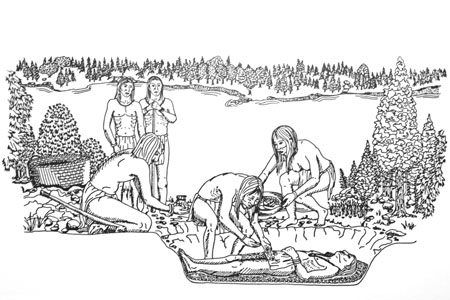
Early Woodland Period (circa 300 B.C.E.)
Peoples living in Eastern Ontario began to use pottery during the Early Woodland Period. Early pots were crudely made, with thick walls and a distinct cord-marked exterior surface. The practice of including grave goods with burials continued, influenced by the Adena Culture, centred in the Ohio River Valley, and the Middlesex tradition, which was focused in New York State.
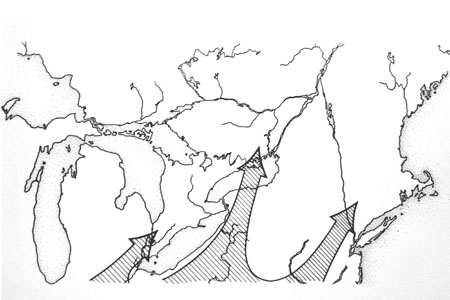
Middle Woodland Period (circa 900 C.E.)
During the Middle Woodland Period regionally distinct pottery styles developed, and trade networks began to disintegrate. Ceramic vessels were of a higher quality than previously, and appeared in a greater range of shapes and with a greater variety of decorations. The disintegration of trade networks toward the end of this period coincided with the decline of major cultural influences centred in Ohio and Illinois. Agriculture was introduced to Eastern Ontario towards the end of the Middle Woodland Period.

Late Woodland Period (circa 1600 C.E.)
Domesticated plants (corn, beans, and squash) increased in significance as supplements to the more traditional foods such as deer, fish, and wild plants during the Late Woodland Period. Agriculture allowed the Late Woodland Peoples to live in permanent villages. Increasing conflict between groups resulted in the construction of palisades around some of these villages.
